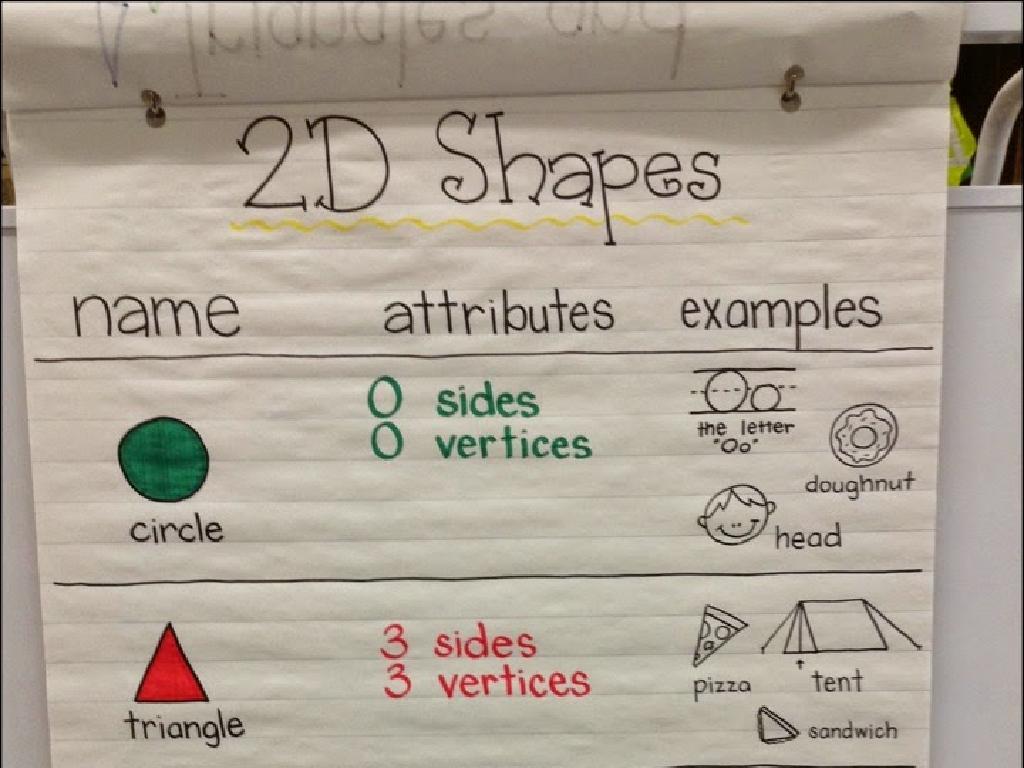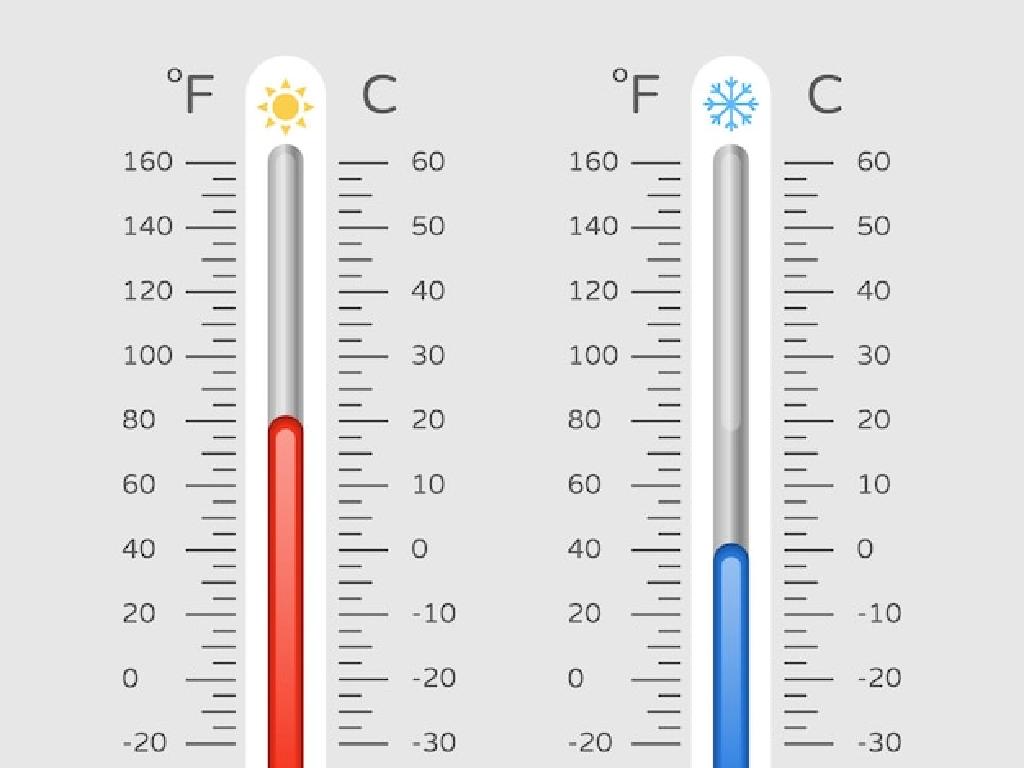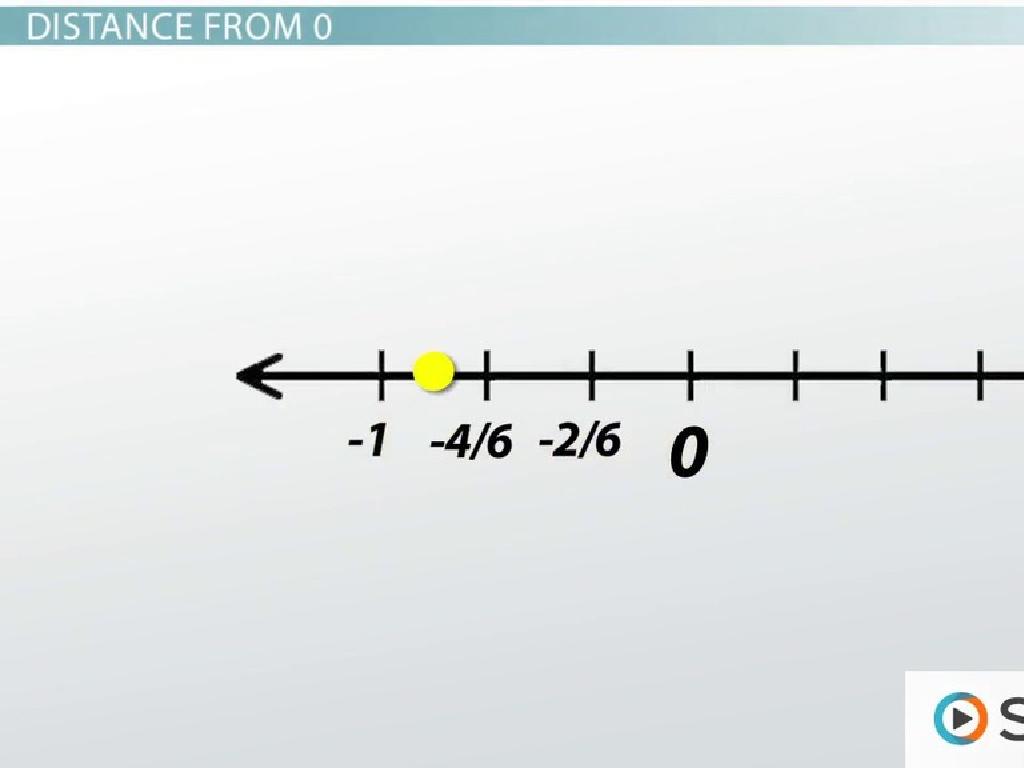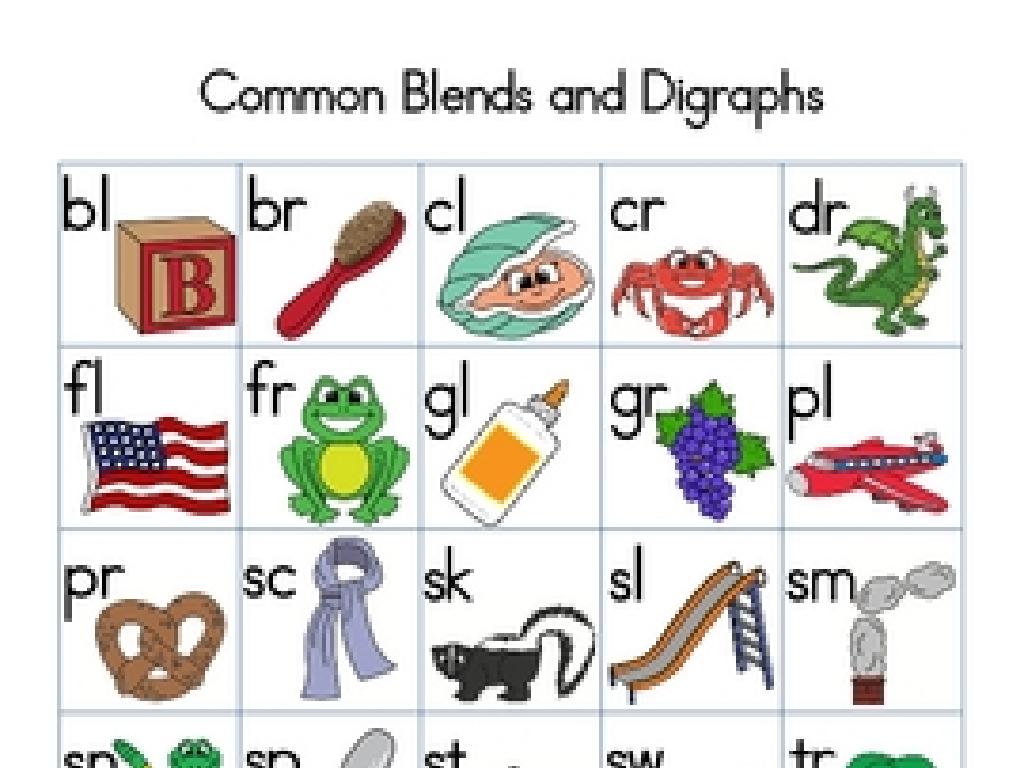Body Systems: Perception And Motion
Subject: Science
Grade: Fifth grade
Topic: Animals
Please LOG IN to download the presentation. Access is available to registered users only.
View More Content
Exploring Animal Body Systems: Perception and Motion
– Introduction to body systems
– Body systems are groups of organs working together
– Perception and motion in animals
– Animals use senses and muscles to interact with the world
– How humans perceive and move
– Humans have similar systems for sight, sound, and movement
– Overview of today’s lesson
|
This slide introduces the concept of body systems with a focus on perception and motion. Explain that body systems are made up of organs and tissues that work together to perform important functions for survival. Highlight how animals, including humans, use their senses to perceive their environment and their muscles and skeletons to move. Provide a brief overview of the lesson, outlining that we will explore different body systems, how they contribute to an animal’s ability to perceive and move, and how these systems compare to those in humans. Encourage students to think about their own experiences with perception and motion to make the lesson relatable.
Understanding Perception in Animals
– What is perception?
– Perception is how animals interpret sensory information.
– Exploring the five senses
– Sight, hearing, smell, taste, touch are crucial for survival.
– Animals’ senses and environment
– Senses help animals find food, mates, and avoid danger.
– Sensory adaptation in animals
|
Perception is the process by which animals interpret and make sense of the sensory information they receive from their environment. Introduce the concept by explaining how perception involves the brain processing signals from the senses. Discuss each of the five senses, providing examples of how different animals use these senses in unique ways to survive. For instance, bats use echolocation (hearing) to navigate in the dark, while butterflies have taste receptors on their feet. Highlight how animals’ senses are adapted to their specific environments, which allows them to interact effectively with the world around them. Encourage students to think about how humans and animals alike rely on their senses to understand their surroundings.
The Nervous System: Responding to the World
– What is the nervous system?
– It’s like the body’s command center for controlling actions and reactions.
– Brain and nerves teamwork
– The brain is the boss, nerves are the messengers.
– Nervous system and perception
– It helps us understand what we see, hear, smell, taste, and touch.
– Nervous system’s role in action
|
This slide introduces the nervous system as a fundamental part of how animals, including humans, interact with their environment. Begin by explaining the nervous system’s basic function as the body’s control system for all actions and reactions. Clarify how the brain works in conjunction with a vast network of nerves to process information from the senses, leading to perception. Emphasize the importance of the nervous system in allowing us to perceive the world around us and respond appropriately. Use relatable examples, such as how we pull our hand away from a hot surface, to illustrate the nervous system’s role in motion and reaction. Encourage students to think about how they use their senses and ask them to share experiences where their nervous system helped them respond to their environment.
Sight and Vision in Animals
– Eyes: Windows to the world
– Eyes capture light and send signals to the brain to create images.
– Eye parts and their roles
– Cornea, pupil, lens, retina each play a part in seeing.
– Animal vision adaptations
– Eagles have sharp vision; owls see well at night.
– How vision aids survival
– Good vision helps animals find food and avoid danger.
|
This slide introduces the concept of sight and vision, focusing on the biological mechanism of how eyes work. Begin by explaining that eyes are the organs that allow us to see by capturing light and converting it into signals that our brain interprets as images. Discuss the different parts of the eye such as the cornea, pupil, lens, and retina, and their specific functions in the process of seeing. Highlight how various animals have adapted their vision to survive in their environments, like eagles with their sharp eyesight for spotting prey from a distance, or nocturnal owls that can see well in low light. Emphasize the importance of vision in animals for finding food, avoiding predators, and navigating their surroundings. Encourage students to think about how different life would be without the ability to see and to consider the diverse ways animals use their vision to thrive.
Hearing and Sound: Ears and Animal Adaptations
– How our ears help us hear
– Ears catch sound waves and send signals to the brain.
– Journey of sound to the brain
– Sound waves travel through ear parts and turn into messages for our brain.
– Animal hearing adaptations
– Some animals have special ears to hear better in their environments.
|
This slide introduces the concept of hearing and sound, focusing on the biological process of how ears work and the way sound is interpreted by the brain. It also touches on the fascinating adaptations animals have developed to enhance their hearing abilities. Explain the anatomy of the ear (outer, middle, inner ear) and how sound waves are transformed into electrical signals that the brain understands as sound. Discuss examples like the large ears of a fennec fox, which help it hear prey moving underground in the desert, or the echolocation abilities of bats. Encourage students to think about how different animals might rely on their hearing for survival in various ecosystems.
Motion in Animals
– Animals move in various ways
– Walking, running, flying, swimming
– Muscles and bones create motion
– Muscles contract to pull on bones
– Types of animal locomotion
– Walking, hopping, slithering, flying, swimming
– Adaptations for movement
– Fins for swimming, wings for flying
|
This slide introduces the concept of motion in animals, highlighting the different ways animals move such as walking, running, flying, and swimming. It explains the role of muscles and bones in facilitating movement, where muscles contract to pull on bones, creating motion. The slide also covers the various types of locomotion found in the animal kingdom, including walking, hopping, slithering, flying, and swimming. Additionally, it touches on the physical adaptations animals have developed to move effectively in their environments, such as fins for swimming in fish or wings for flying in birds. Encourage students to think about how different animals move and why they might have evolved to move that way. This will help them understand the relationship between an animal’s structure and its function in the context of movement and survival.
Exploring the Skeletal System
– Skeleton: Support and Protection
– The skeleton keeps us upright and shields organs like the brain and heart.
– Joints: Facilitating Movement
– Joints connect bones and let us bend, twist, and move.
– Human vs Animal Skeletons
– Compare bones in humans to creatures like birds or dogs.
|
This slide introduces the skeletal system, emphasizing its importance in providing structure and protection for the body. Discuss how the skeleton is like the framework of a building, giving shape and support. Explain that joints are the pivot points that allow bones to move and how different types of joints (like hinges in our elbows or a pivot in our neck) enable various movements. Encourage students to think about how their own bodies move and relate it to what they learn about joints. Finally, draw attention to the similarities and differences between human skeletons and those of other animals, such as the number of bones or the shape of the skull, to highlight adaptation and evolution. This comparison can be a great segue into discussing how different animals move in unique ways due to their skeletal structure.
The Muscular System: Powering Movement
– Muscles as engines of movement
– Muscles contract to move parts of the body.
– Muscle types: smooth, cardiac, skeletal
– Smooth: inside organs, Cardiac: heart, Skeletal: arms/legs
– Voluntary vs. involuntary muscles
– Voluntary: under our control, Involuntary: automatic
– Examples of muscle use in daily life
– Chewing food (voluntary), Heart beating (involuntary)
|
This slide introduces the muscular system, emphasizing its role in movement and the different types of muscles. Explain that muscles work by contracting and relaxing, which allows us to move our body parts. There are three types of muscles: smooth muscles found inside organs, cardiac muscles found only in the heart, and skeletal muscles that are attached to bones and control voluntary movements. Highlight the difference between voluntary muscles, which we move by choice (like waving a hand), and involuntary muscles, which work without us thinking about them (like the heart pumping blood). Use everyday activities to illustrate these concepts, such as eating or running, to make the information relatable to fifth graders.
Perception & Motion: Working Together
– Daily activities need perception & motion
– Walking, catching a ball, or avoiding obstacles
– Animals use both to survive
– A hawk swooping for prey uses sharp vision (perception) and precise movement (motion)
– Comparing humans & animals
– Humans have complex brains for perception, but some animals have better motion abilities
– Understanding our body systems
|
This slide aims to help students understand the interconnectedness of perception and motion in both humans and animals. Perception involves the senses and the brain’s interpretation of sensory information, while motion refers to the physical movement and coordination of the body. Daily activities, such as walking or playing sports, require the integration of these systems. Animals, like hawks or cheetahs, rely on their keen perception and swift motion for hunting, which is crucial for their survival. When comparing humans and animals, highlight that while humans have advanced perception due to complex brain structures, certain animals may surpass human abilities in motion, such as speed or agility. Encourage students to think of more examples and discuss how these systems are essential for daily life and survival in the animal kingdom.
Class Activity: Sensory Scavenger Hunt
– Engage in a sensory scavenger hunt
– Use senses to locate list items
– Identify items using perception
– How did your senses guide you to each item?
– Discuss the sensory experience
– Share how each sense was involved in the activity
|
This activity is designed to help students understand the role of their senses in perception and motion. Set up a scavenger hunt with various items around the classroom or schoolyard. Provide a list of items for students to find using their senses. As they locate each item, they should note which senses they used. After the hunt, facilitate a discussion on how perception helped them find the items. Possible variations of the activity could include finding items with specific textures, identifying sounds from different locations, or distinguishing scents. This will help students appreciate the complexity and importance of their sensory systems in everyday life.
Class Activity: Mimic the Motion
– Act out animal movements
– Explore diverse body movements
– Discover muscle-bone coordination
– How do muscles and bones interact when you crawl like a tiger or hop like a kangaroo?
– Reflect on the activity
– Think about what you felt and learned while moving like different animals.
|
This interactive class activity is designed to help students understand the complexity of animal motion and the role of the musculoskeletal system in facilitating movement. Students will imitate various animal movements, such as hopping like a frog or slithering like a snake, to explore the range of motion their bodies are capable of. This will also provide a practical understanding of how muscles and bones work in unison to create movement. After the activity, lead a discussion where students can reflect on their experiences and share insights about how their bodies felt during the different movements. This will reinforce their understanding of the human body’s capabilities and the similarities and differences between human and animal motion. Possible activities include hopping, crawling, slithering, and swinging arms like an elephant’s trunk.
Conclusion: Body Systems in Animals
– Recap: perception and motion systems
– Systems’ role in daily life
– How animals use these systems to interact with their environment
– Survival importance of these systems
– These systems are crucial for finding food and avoiding predators
– Engage in Q&A session
– Ask any questions to clear up confusion about the topic
|
This slide aims to summarize the key points from the lesson on animal body systems related to perception and motion. Highlight how these systems allow animals to process sensory information and respond to their environment, which is essential for daily activities and survival. Emphasize the importance of the nervous and muscular systems in these processes. During the Q&A session, encourage students to ask questions about anything they didn’t understand, providing an opportunity for them to clarify their doubts and solidify their understanding of the topic.





